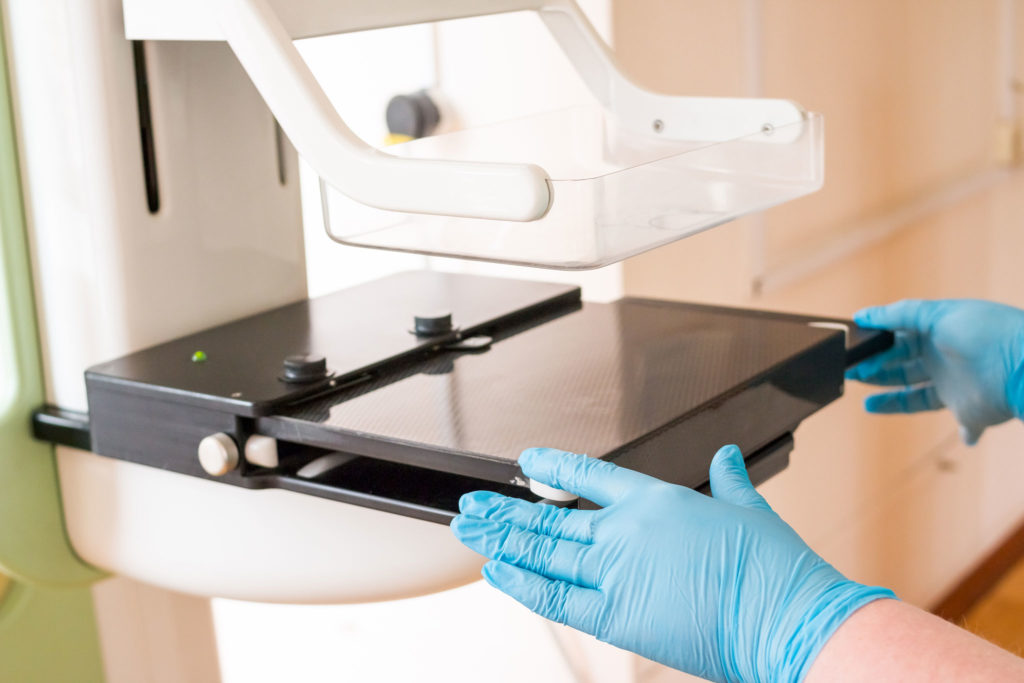
Findings Coincide with Plummeting Cancer Screening Rates Due, in Part, to Pandemic Fears and Barriers
Attendance at regular mammography screening substantially reduces the risk of dying from breast cancer, according to a large study of over half a million women, funded by the American Cancer Society and published in the journal Radiology. Researchers said women who skip even one scheduled mammography screening before a breast cancer diagnosis face a significantly higher risk of dying from the cancer.
“This is the first time we’ve analyzed the mortality benefit of not just breast cancer screening, but regular breast cancer screening, using such a robust, comprehensive data set,” said Robert Smith, PhD, senior vice president of cancer screening for the American Cancer Society.
Smith added, “This study comes at a critical time, as a staggering number of women have missed their regular mammogram over the past 12 months due to the period when screening services were suspended as a result of the pandemic, as well as enduring fears and barriers caused by the COVID-19 pandemic.”
How important it is to get mammograms during the pandemic?
In the new study, led by László Tabár, M.D., from Falun Central Hospital in Falun, Sweden, a multinational team of researchers took a more detailed look at screening attendance patterns to further refine mortality risk estimates. They analyzed data from almost 550,000 women eligible for mammography screening in nine Swedish counties between 1992 and 2016. The women were divided into groups based on their participation in the two most recent scheduled screening exams prior to cancer diagnosis. Women who participated in both screening sessions prior to diagnosis were identified as serial participants, while those who did not attend either screening opportunity were categorized as serial nonparticipants.
What to Do When a Mammogram Shows Swollen Lymph Nodes in Women Just Vaccinated for COVID
Analysis showed that participation in the two most recent mammography screening appointments before a breast cancer diagnosis provides a higher protection against breast cancer death than participation in neither or only one examination.
The incidence of breast cancers proving fatal within 10 years of diagnosis was 50% lower for serial participants than for serial nonparticipants. Compared to women who attended only one of the two previous screens, women who attended both had 29% fewer breast cancer deaths.
Get our “Thriver Thursdays” Email
Get all the latest cancer prevention and treatment news plus upcoming survivor programs, straight to your inbox every Thursday. Your privacy is important to us.
“Regular participation in all scheduled screens confers the greatest reduction in your risk of dying from breast cancer,” said the study’s lead author, Stephen W. Duffy, M.Sc., professor of cancer screening at Queen Mary University of London.
Duffy said the results add further evidence to support regular screening with mammography as a means for reducing breast cancer-related deaths: “While we suspected that regular participation would confer a reduction greater than that with irregular participation, I think it is fair to say that we were slightly surprised by the size of the effect.”
“The message that women should take from this analysis is clear: regular screening tests can save your life,” said Smith. “Regular mammography screening is an important part of a woman’s preventive health plan. And, if you’ve missed getting your mammogram during this pandemic, call your doctor to make up that appointment, and be conscientious going forward about getting regular mammograms.”
Breast cancer screening with mammography has helped to substantially reduce breast cancer deaths by enabling detection of cancer at earlier, more treatable stages. Despite mammography’s well-established effectiveness, many women don’t participate in recommended screening examinations, and pandemic-related barriers to screening have exacerbated this reluctance. According to the Prevent Cancer Foundation, an estimated 35% of Americans missed routine cancer screening due to COVID-19-related fears and service disruptions early in the pandemic.
In the US in 2021, there will be an estimated 281,550 new cases of invasive breast cancer diagnosed in women and 43,600 deaths. For women at average risk of breast cancer, the American Cancer Society recommends that those 40 to 44 years of age have the option to begin annual mammography; those 45 to 54 undergo annual mammography; and those 55 years of age and older transition to biennial mammography or continue annual mammography. Women should continue mammography as long as overall health is good and life expectancy is 10 or more years. For some women at high risk of breast cancer, annual breast magnetic resonance imaging (MRI) is recommended to accompany mammography, typically starting at age 30.
Sources
- Originally published March 2, 2021 by the American Cancer Society Society.
- “Beneficial Effect of Consecutive Screening Mammography Examinations on Mortality from Breast Cancer: A Prospective Study.” Collaborating with Dr. Tabár and Professor Duffy were Amy Ming-Fang Yen, Ph.D., Peter B. Dean, M.D., Robert A. Smith, Ph.D., Håkan Jonsson, Ph.D., Sven Törnberg, M.D., Sherry Yueh-Hsia Chiu, Ph.D., Sam Li-Sheng Chen, Ph.D., Grace Hsiao-Hsuan Jen, Ph.D., May Mei-Sheng Ku, Ph.D., Chen-Yang Hsu, Ph.D., Johan Ahlgren, M.D., Roberta Maroni, M.Sc., Lars Holmberg, M.D., and Tony Hsiu-Hsi Chen, Ph.D.

